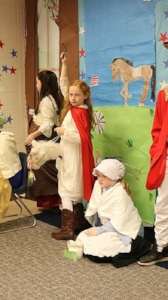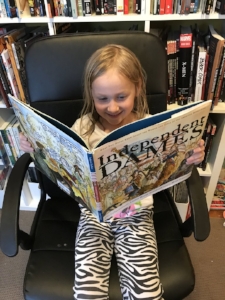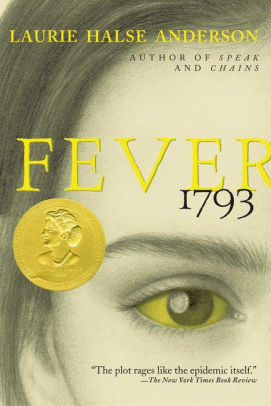Kid Beowulf: the Rise of El Cid by Alexis E. Fajardo . See my interview with this inspiring author, and more images from his new book, here - http://www.historycomics.net/creator-interviews/
Imagination, political intrigue, pride, greed, love, revenge, betrayal, plotting, morality, heroism, history, humor – all words that came to mind as I read this graphic novel.
What makes a knight? What motivates a hero? What would you do for love? Can a hero truly be chivalrous? All central questions that apply to both contemporary and past cultures. There is also a central tale of love between Ximena and El Cid that will resonate with our students on a personal level.
I was absolutely blown away while reading this engaging, historical, and fun graphic novel by Alexis E. Fajardo and I was already a big fan from the first two books in the Kid Beowulf series. This book is a self-contained story, but also adds to the ongoing saga of these two main characters. I found myself having to read this book with a computer at my side as I wanted to learn more about what was referenced in the story. This is what makes the book perfect for a classroom as there is so much to learn and it is presented in a highly engaging way. I kept putting in sticky notes with comments and moments that stuck out to me as a social studies teacher. The graphic novel would fit perfectly in a Language Arts or social studies classroom, either as a core text or part of a library. As for grade level, this would fit on multiple levels from 6th through high school. The teacher would need to be a bit more involved in the lower grades with setting up historical context and terminology, but the author provides great resources at the end of this book to help with this process. In high school, classes could use this as a companion to the original poem and textbook. As a high school social studies teacher, I have my students read and annotate portions of Les Mis, Don Quixote, and other texts – but there is never enough time to go into detail. This graphic novel allows students to get both depth and breadth of a time-period, multiple cultures, and literature. In addition to the historic nature of the topic, the author also includes maps, cultural terms/references, and outside historical events to make this a powerful educational tool. The reader gets a good idea of the different classes, jobs, buildings, court system, battle tactics, and etiquette of the medieval world.
Why was El Cid sent into exile? How did he become a hero in the first place? Are the events in this poem, and graphic novel, rooted in historical events and people? These answers are given in a fun but accurate way that kept me turning the pages. The annotations and research are evident throughout this book and I was continually awed that Fajardo was the artist, author, and researcher for the graphic novel. I cannot fathom the amount of work that went into creating this graphic novel. This book is the perfect example of the power of graphic novels as meaningful literature that deserve a place in every classroom. There are a number of higher vocabulary terms included in the dialogue and it is the pairing of text and visuals that will help students to make meaning which is again the power of graphic novels.
The prologue to the book gives a beautifully illustrated summary of the original poem and is an excellent place to begin the adventure. The story also teaches students to be close readers as they use both visual and textual clues to make connections between the original poem and this story. One example is when a young Pedro is introduced and cannot talk, but draws to communicate. Students would then flip back a few pages in the book to the prologue to make connections and to understand who he is. I can envision using this book as a way to inspire students to create their own graphic adaptions to classic literature and to imagine these characters in their own personal way.
As all of the historical adventures are occurring, Kid Beowulf and Grendel (yes, from THAT poem) provide some comedic relief and allow the reader to feel a connection between all the books in this series. The way that these cultures – Moore, Christian, Jewish, Norse – are intertwined is absolutely delightful and well done.
The illustrations really pull in the reader and gives them a sense of historical presence and understanding. Fajardo works in so much in each panel – the reader has to pay close attention or will miss out on some of the humor and plot. This is what truly teaches our students to be active and close readers. The looks on the animals’ faces throughout the book absolutely cracked me up. The drawings add so much to the story and the author’s talents shine through.
Laurie Halse Anderson is my favorite author of "regular" books, meaning traditional prose. More than that, she is one of my favorite human beings because, well, she is just so human. I have had the privilege of seeing her speak about her books and her life, she even came to speak to my wife's 8th grade Language Arts students and with my own children. In a house full of books and book-lovers, it is no small compliment to say that Laurie stands out as a hero in my house. You simply must follow Laurie on Twitter - @halseanderson to see what she is up to and how she inspires readers around the world. I already loved her for the Chains Trilogy and other books, but this graphic novel adaptation of Speak just blew me away. This is one of those books that means so much to so many, and some people voiced their concerns of putting this beloved text into a graphic novel. Hell, I even had my concerns, despite my insane love for all things comics and graphic novels. However, I have not had a graphic novel impact me more than this one. What Emily Carroll (also creator of the amazing Through the Woods graphic novel) was able to do with the illustrations literally left me astounded, page after page. There were so many important parts of Speak that I was afraid simply wouldn't transfer from my mind to someone else's illustrative interpretation. After seeing what Carroll was able to create, she added so much more meaning to an already powerful book. I had to stop many times and just mentally process what I was seeing - below is a picture of all my sticky notes as I read both version of the books. I have heard similar responses from educators around the country as I present on the power of comics in education. Those who have read the graphic novel version of the book agree with me. It is funny when I talk about this book in presentations - there is always an audible gasp from the audience as people are dumbfounded that there is a graphic novel version. I give away a copy or two at each presentation and, in the midst of other graphic novel prize offers, this is always the first to be taken. I have also brought a few copies into my classroom - I cannot keep it in the classroom as student after student borrows it - one after the other.
Admittedly, graphic novels can sometimes mess with one's mental images, skip parts of the text, or awkwardly combine much into one panel. This is just not the case here, and I think that this graphic novel is the perfect example for the power of this medium. As an example, I was better able to understand the role of the trees as an integral character in the story - only after reading the graphic novel version.
There are several cases in the book where no words are present - the images speak so much to the reader in such powerful and moving ways.
The eyes throughout the book will make you feel haunted, introspective, and often powerless.
This is THE panel for me. There were many powerful moments in the book, I often closed the book and had to mentally reflect before being able to move on. It is this panel that speaks the most to this not being a "girls" story. For one, it is so important for boys/men to read this book to get an understanding of the mental/emotional and physical impact of female objectification and rape culture. But it also speaks to the voiceless and damaged people the world over. So many of us have been through awful circumstances and have internalized these experiences, too afraid or embarrassed, or even terrified, to speak out. I suffer from depression and anxiety myself. I was sexually abused by two people in my life. I am now in my 40s, and it wasn't until seeing this one page that I finally internalized that I needed to find my voice, that it wasn't my fault, and that it was ok to seek help - to end the stigma as it were. Imagine that - one page in a graphic novel, to make a life-changing impact on my life. This book is that powerful. I have begun to find my voice. I have had this same beast in my gut, sitting on my ribs for too long, as so many of us have. I have a parent who has a mental disorder and has been both emotionally and physically abusive to me my entire life as well. I was never able to talk about this either, it is this image, and the connection to the beast on my own ribs that made me understand. Thank you, Emily. Thank you, Laurie.
When you read Laurie's books, it really is like having a conversation with her. Amazing.
The end of the book does not leave us powerless or without hope. It is, despite all odds, empowering.
Laurie and I.
My wife, Joan, and Laurie when she came to speak to the 8th grade students.
My kids and Laurie.
My daughter was inspired to research Sybil Ludington for her 5th grade research project because of Laurie and her Independent Dames book. What are History teacher and Language Arts teacher parents to do? Yep - track down the town and statue dedicated to Ludington!
Below are some of the other books you need to buy...



















